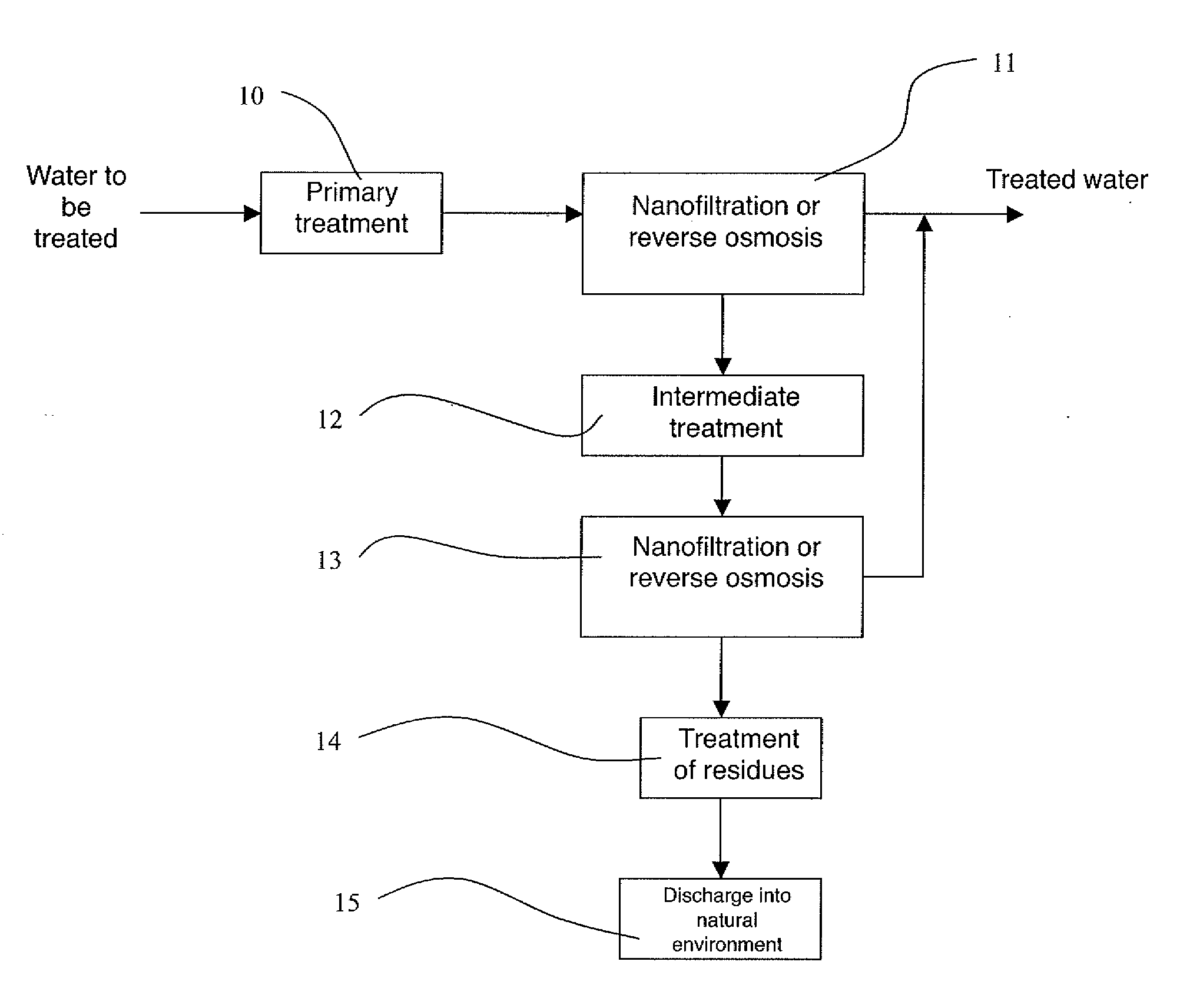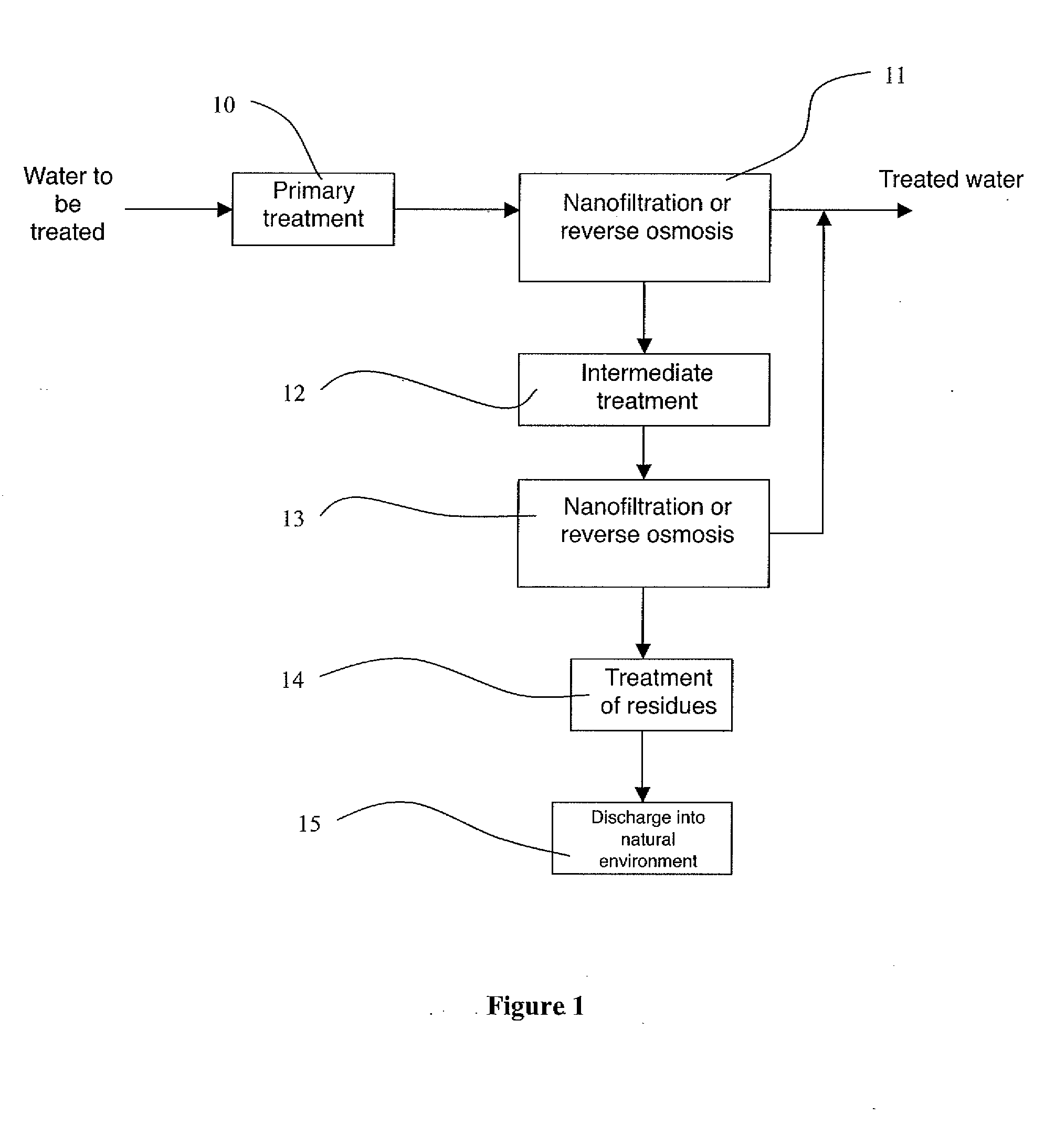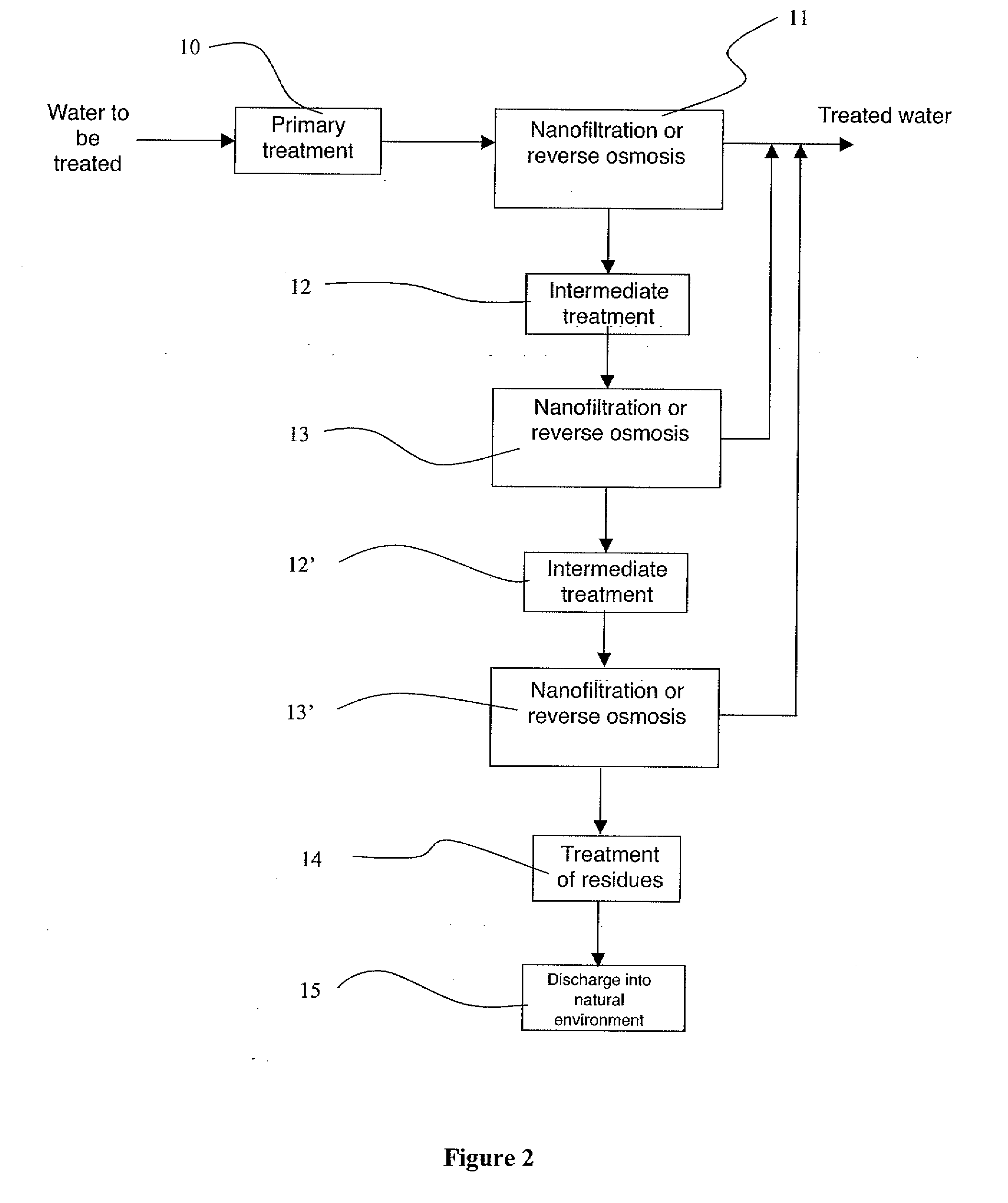Process for treating water by a nanofiltration or reverse osmosis membrane system enabling high conversion rates due to the elimination of organic matter
a reverse osmosis membrane and nanofiltration technology, applied in the field of water treatment, can solve the problems of increasing the head loss, reducing the efficiency of treatment plants, and clogging of membranes, and achieve the effect of limiting the clogging of membranes
- Summary
- Abstract
- Description
- Claims
- Application Information
AI Technical Summary
Benefits of technology
Problems solved by technology
Method used
Image
Examples
first embodiment
Example of a Water Treatment Process According to the Invention
[0081]A water treatment process according to a first embodiment of the invention will be described in reference to FIG. 1.
[0082]As shown, this water treatment process, which can be implemented in the treatment of freshwater, brackish water, water leaving a wastewater treatment plant, or saltwater for the potabilization, purification, recycling or desalination thereof includes a step of primary treatment 10 of the water to be treated.
[0083]This primary treatment step 10 can in particular include a grit removal / screening phase to retain a significant part of relatively large-sized solid particles initially present in the water to be treated.
[0084]This primary treatment step 10 can also include a pre-oxidation step (O2, KmnO4, Chloramine, ClO2, Cl2, O3, etc.) to oxidize the reduced metals (iron, manganese, etc.) and improve coagulation.
[0085]This primary treatment step 10 can also include a coagulation phase so as to promot...
second embodiment
Example of a Water Treatment Process According to the Invention
[0119]A water treatment process according to a second embodiment of the invention will be described in reference to FIG. 3.
[0120]In this FIG. 3, reference signs identical to those used in FIGS. 1 and 2 are used to designate equivalent steps implemented in the process according to the first embodiment.
[0121]Only the essential differences between this second embodiment and the first embodiment above will be described.
[0122]As shown, the essential difference that exists between this second embodiment and the first embodiment lies in the fact that the concentrate resulting from the first nanofiltration or reverse osmosis step 11 is directed directly so that it undergoes a second nanofiltration or reverse osmosis step 14 without undergoing any intermediate treatment.
[0123]However, the concentrate coming from this second nanofiltration or reverse osmosis step 13 is at least partly directed so that it undergoes an intermediate ...
PUM
| Property | Measurement | Unit |
|---|---|---|
| permeate | aaaaa | aaaaa |
| size | aaaaa | aaaaa |
| volume | aaaaa | aaaaa |
Abstract
Description
Claims
Application Information
 Login to View More
Login to View More - R&D
- Intellectual Property
- Life Sciences
- Materials
- Tech Scout
- Unparalleled Data Quality
- Higher Quality Content
- 60% Fewer Hallucinations
Browse by: Latest US Patents, China's latest patents, Technical Efficacy Thesaurus, Application Domain, Technology Topic, Popular Technical Reports.
© 2025 PatSnap. All rights reserved.Legal|Privacy policy|Modern Slavery Act Transparency Statement|Sitemap|About US| Contact US: help@patsnap.com



